Screen capture taken from a prototype vertical slice demonstration of the in-game graphics. A mix of Pixar and Studio Ghibli.
A Life Simulator (working title)
Studio: Sony Computer Entertainment
Role: Creative Director
Key skills: Creative Director. Game Design. Management. Producer. Pitching. Dialogue. Narrative. Brainstorming.
Process: Jason was tasked with developing an ambitious AAA life simulation game that would appeal to a ‘casual audience.’ The audacious concept of the game was to allow the player to live an entire virtual life from birth to death.
The player would develop and guide a player generated character as they responded to dramatic moral situations throughout their life; play, friendships, rivalries, relationships, career choices, emergencies and eventually death itself.
Jason’s first task was to create the outline of a video concept trailer and a tone presentation to pitch the game to Sony’s executives in order to obtain a pre-production green light.

Jason then set about designing the high level structure of the game. Deciding that the game should play out as an aspirational high production TV soap opera (located in a fictional American setting) using traditional RPG mechanics to drive the underlying game systems and character progression/rewards.
The game world would play out in a free form sand box environment that comprised of two major locations containing sub-locations. A small rural town that would be home for the first two decades of the player’s life. And then opening up the game world into a city environment that would become accessible once the player matures into adult life and takes on various career choices.
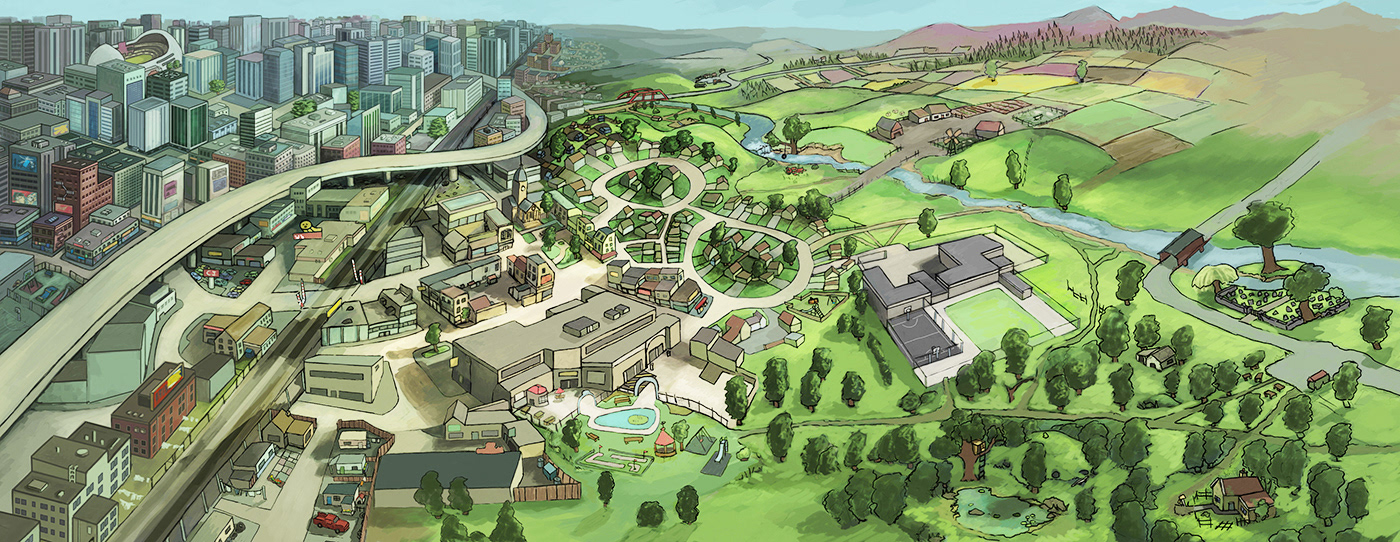
Jason designed the game to be played out in story chapters against a ticking clock, with each chapter set within a pivotal week of the player’s life. Each chapter would have an overarching drama/storyline that would drive the game’s narrative and need resolving before the end of each chapter. The next chapter would be a ten year jump into the future in which the player would discover how their choices and actions in the prior chapter would impact on the next.
The game’s soap opera narrative would comprise a regular cast of characters that would grow and age with the player after each chapter. The soap opera story elements would play out as primary and secondary narrative quests akin to dramatic plot lines in a television show.
How the player tackled each of the story quests would impact on the game world of the next chapter, changing the environment and options available within the game world, as well as changing the behavioural outcome of the cast of characters’ allegiances and rivalries.
In order to prototype the complex narrative structures, Jason devised a low cost playable vertical slice demonstration in the form of a systemic card game version of one of the life chapters. Each interlinking narrative thread, RPG systems, character interaction, location and objects could be play tested within the design group and then further revised by play testing the game with a revolving set of guest players.

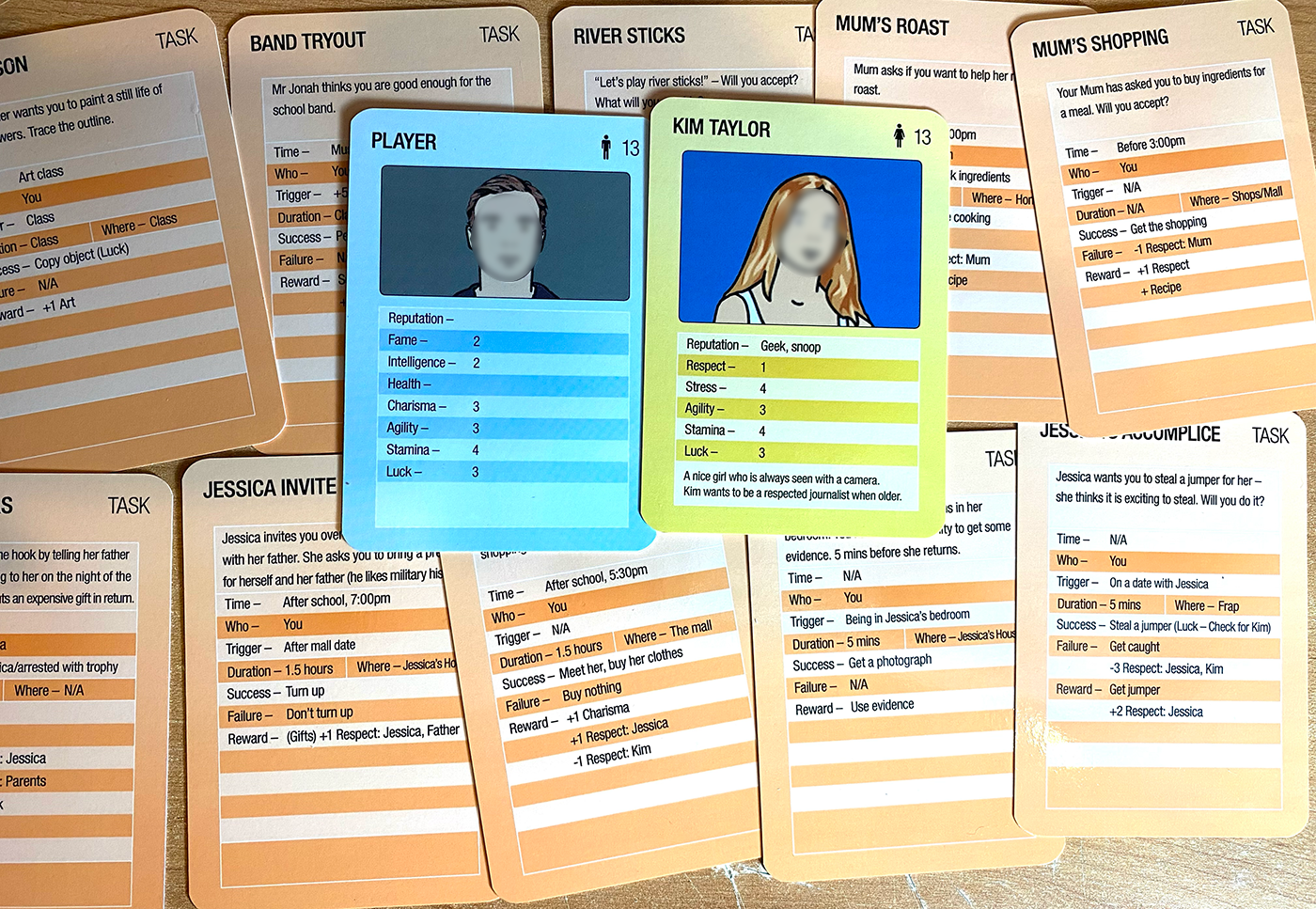
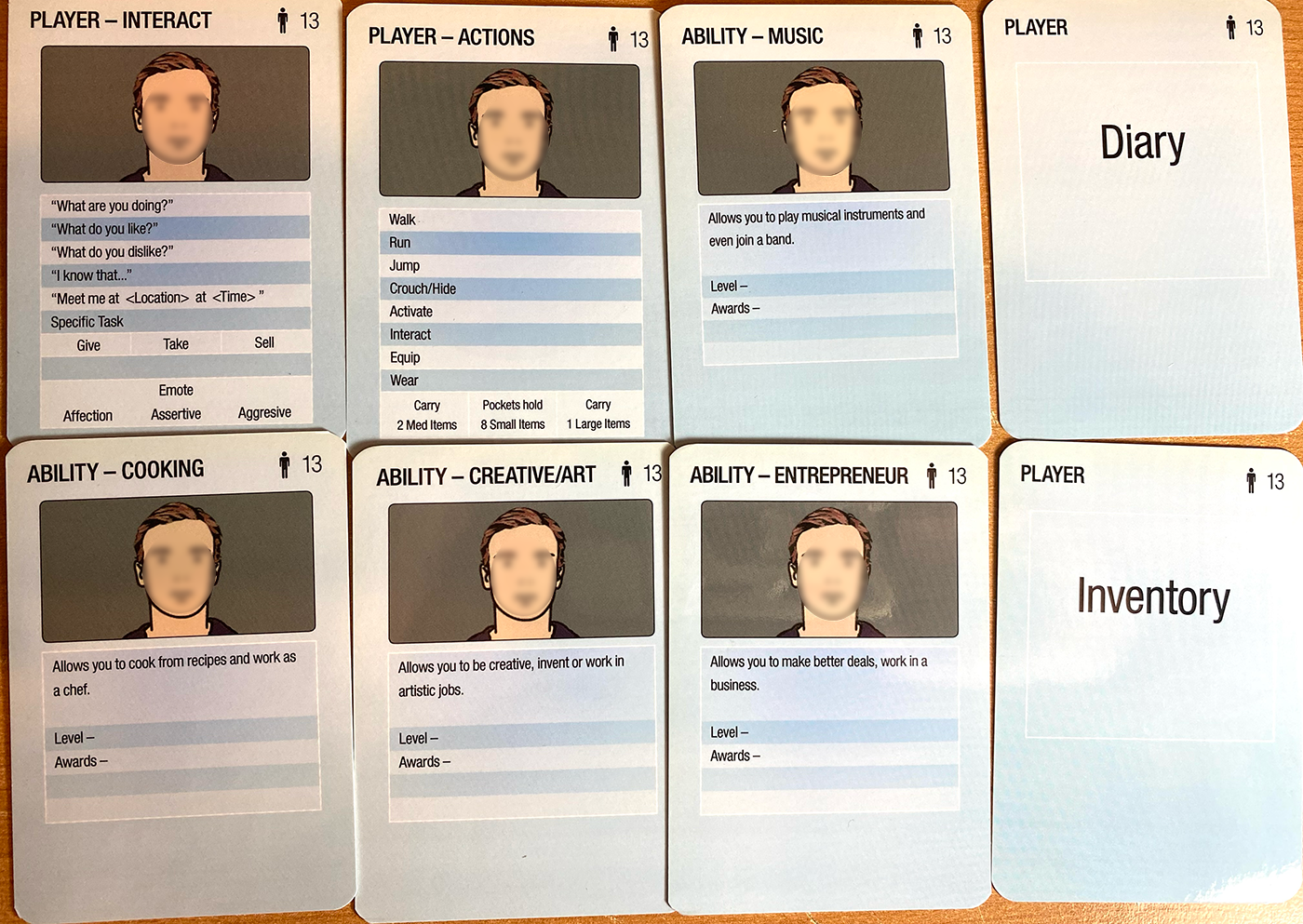
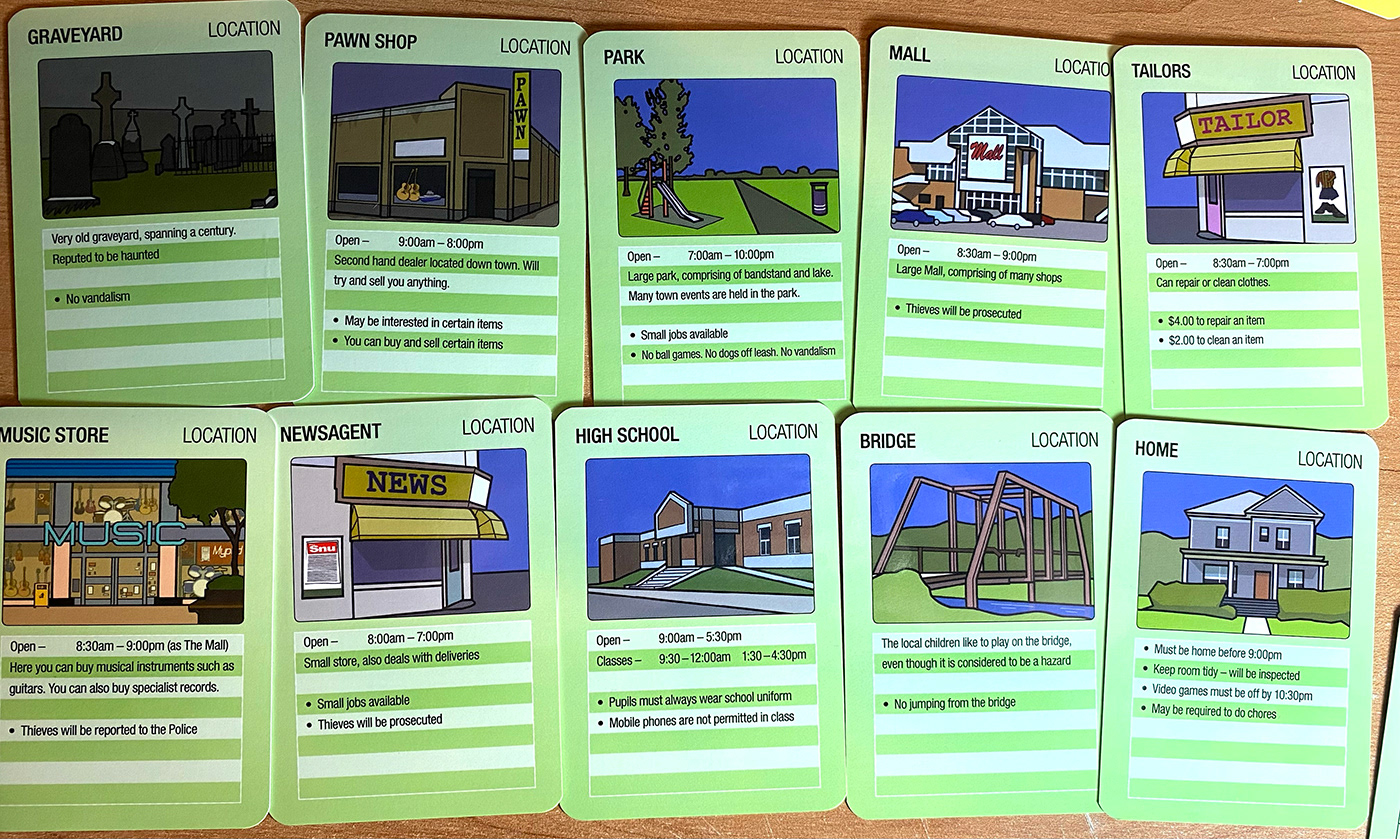
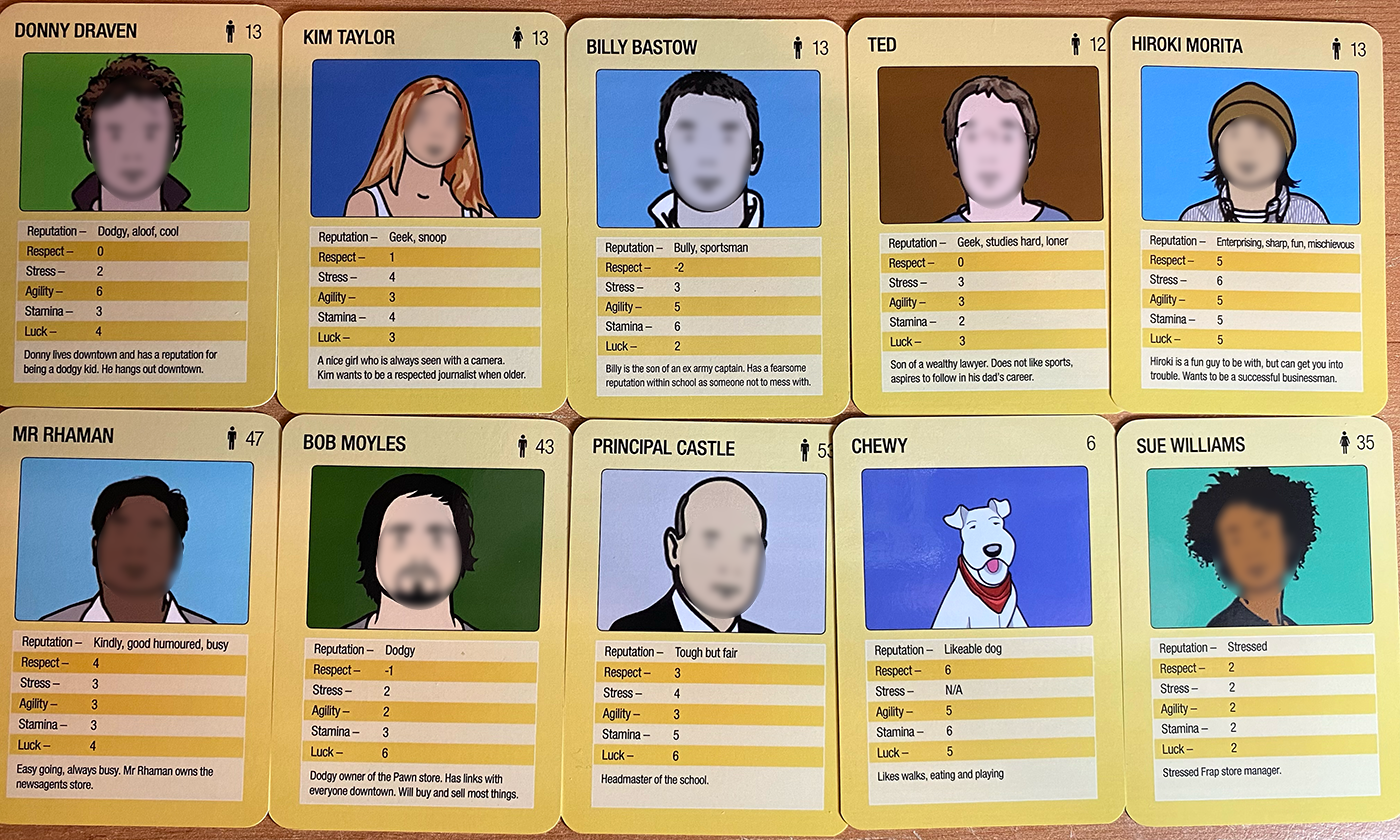
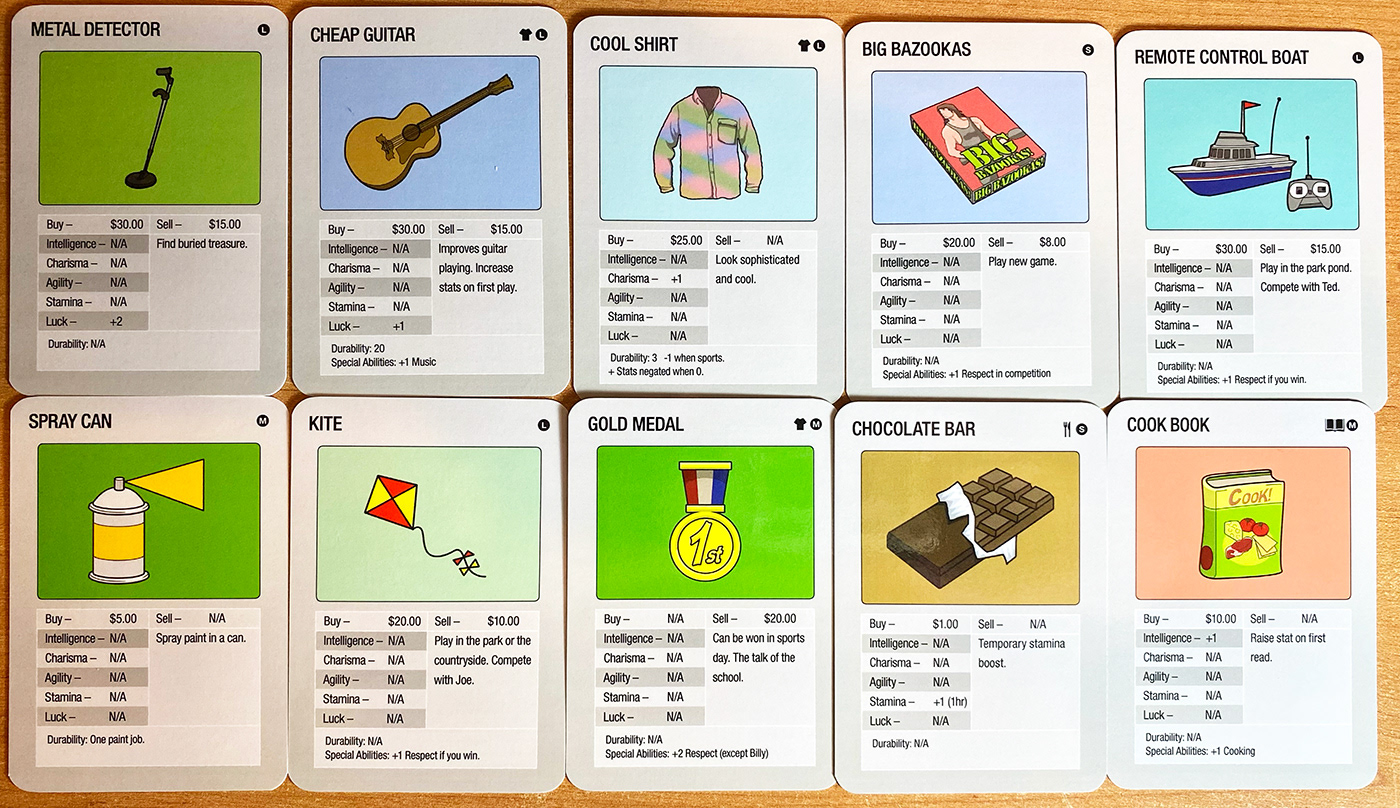
Once the prototype card game systems were deemed robust, the first stage prototype was signed off and the budget of Jason’s design team was increased. Hiring new designers and artists could now commence.
The next stage was to develop a realtime prototype that would include character AI and a dialogue response system based on the card game. The final game would take on the form of a AAA third person environment game but a 2D prototype of the game running in realtime would be a low cost and robust way to further stress test the concept and allow the game to be presented as a playable prototype.
Below are a few examples of the underlying systems and design blueprints that ran the prototype - ranging from character interactions/movements dependent on time of day as well as the dialogue scripting system for each encounter/situation.
As well as example screenshots of the realtime 2D simulation of the card game running on a PC.





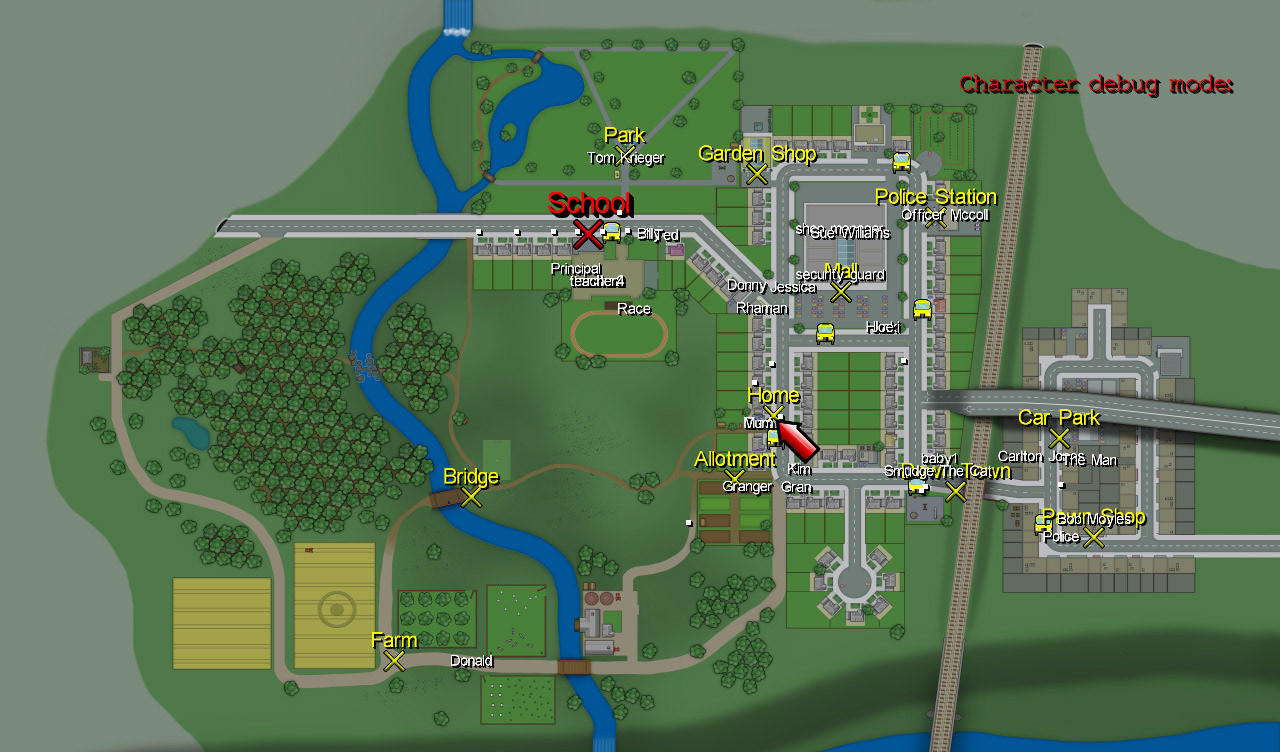
In the meantime, the art department started to build in-game prototype assets to demonstrate the visuals of the sandbox world of the game’s environments and its characters.
Jason’s instruction for the art department was to create a hybrid world of the stylised photo-real environments of Pixar with the warmth and human characteristics of Studio Ghibli.
To this end, character designs were drawn up and a section of the rural town and a city street junction were created in-engine to test the look and feel of the game's environments.
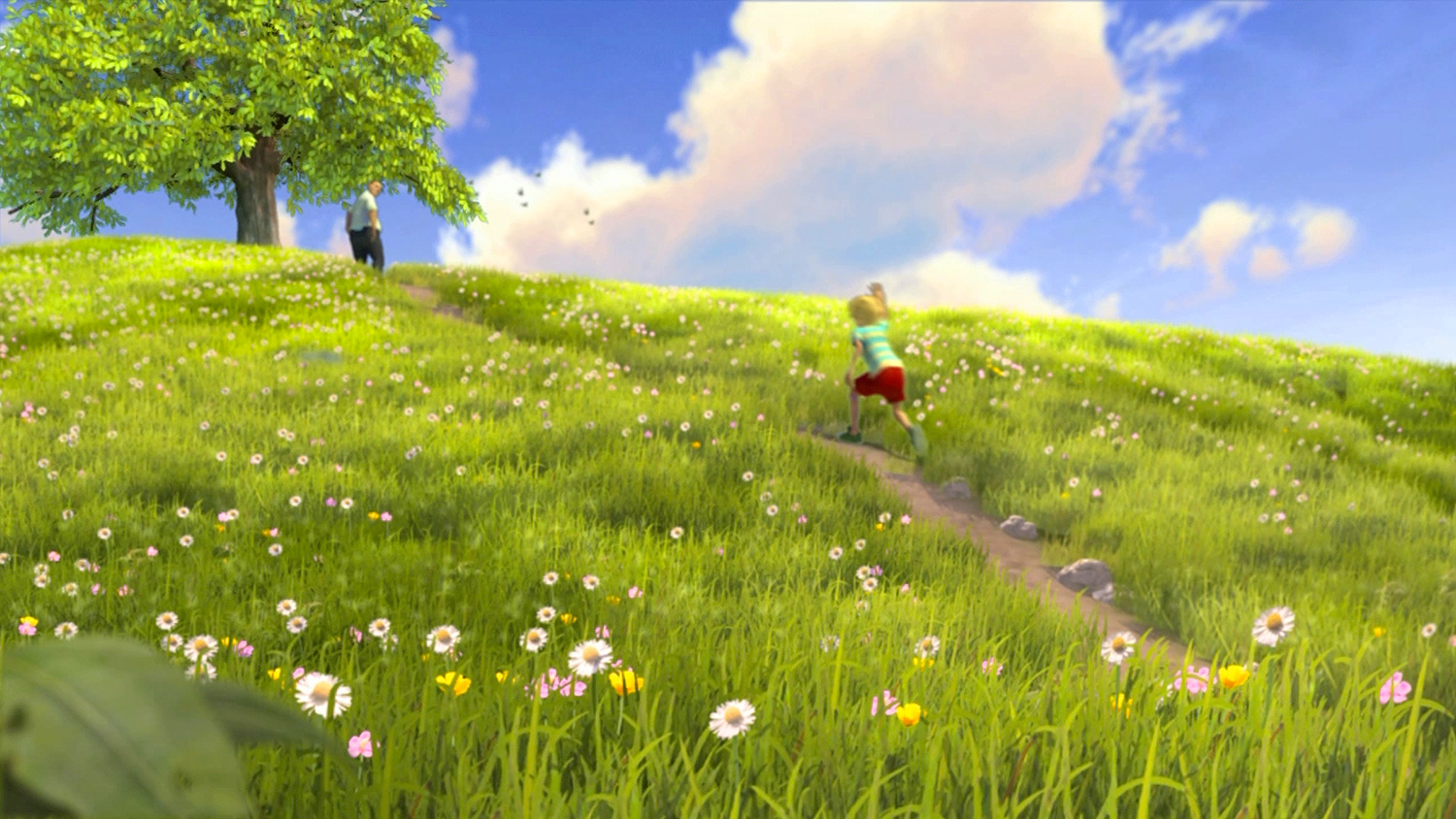

Conclusion:
After a lengthy pre-production design phase of over a year, the life simulation game was deemed to be too risky due to the costs of the AAA production budget.
It was agreed that there was certainly creative merit in the design and prototype investigation into the concept of a life simulation narrative game. However, that it should have been developed as a more cost effective mobile platform proposition and not as a AAA big budget console game.
Jason agreed with the outcome and moved onto investigating alternative design concepts, as well as directing and producing other projects.
Final thoughts:
Any project that does not make it through pre-production is wasted time, everything is a learning process and only helps to bolster experience as well as being able to spot production/concept red flags earlier in development.
The important take away from this game was that of:
Audience relevance: Is the game relevant to the audience’s needs and desires, does the game serve a compelling narrative purpose for the player? What is the hook in terms of game play mechanics and the end goal?
Platform and budget: This comes down to production risk and cost. What platform is your concept better suited to in terms of audience reach and production costs. A costly AAA production or a more budget friendly mobile gaming experience that can offer more content bang for your buck?
Tone and production risks: The life simulator was originated as a AAA production with Hollywood standard visuals. This was a mistake. Taking on a more abstract 2D approach would have better served the concept allowing for more low cost content generation which would have enriched the overall experience. Again, this comes down to Audience relevance.
Final prototype images are property and copyright of Sony Computer Entertainment. All other images/art are not intended for commercial use and are only used for prototype non-commercial purposes.